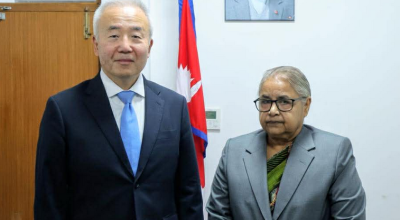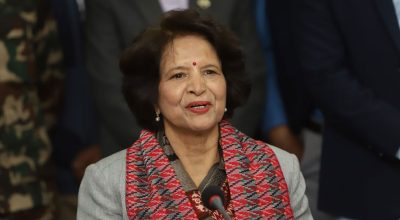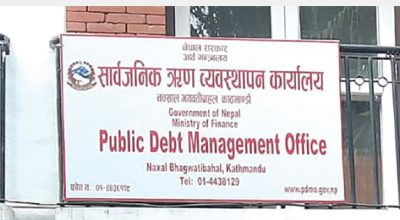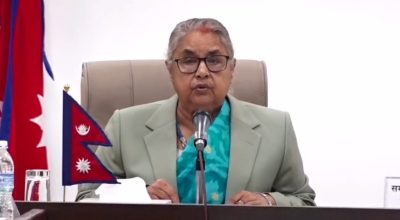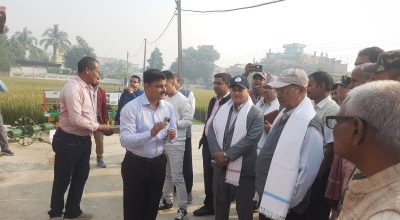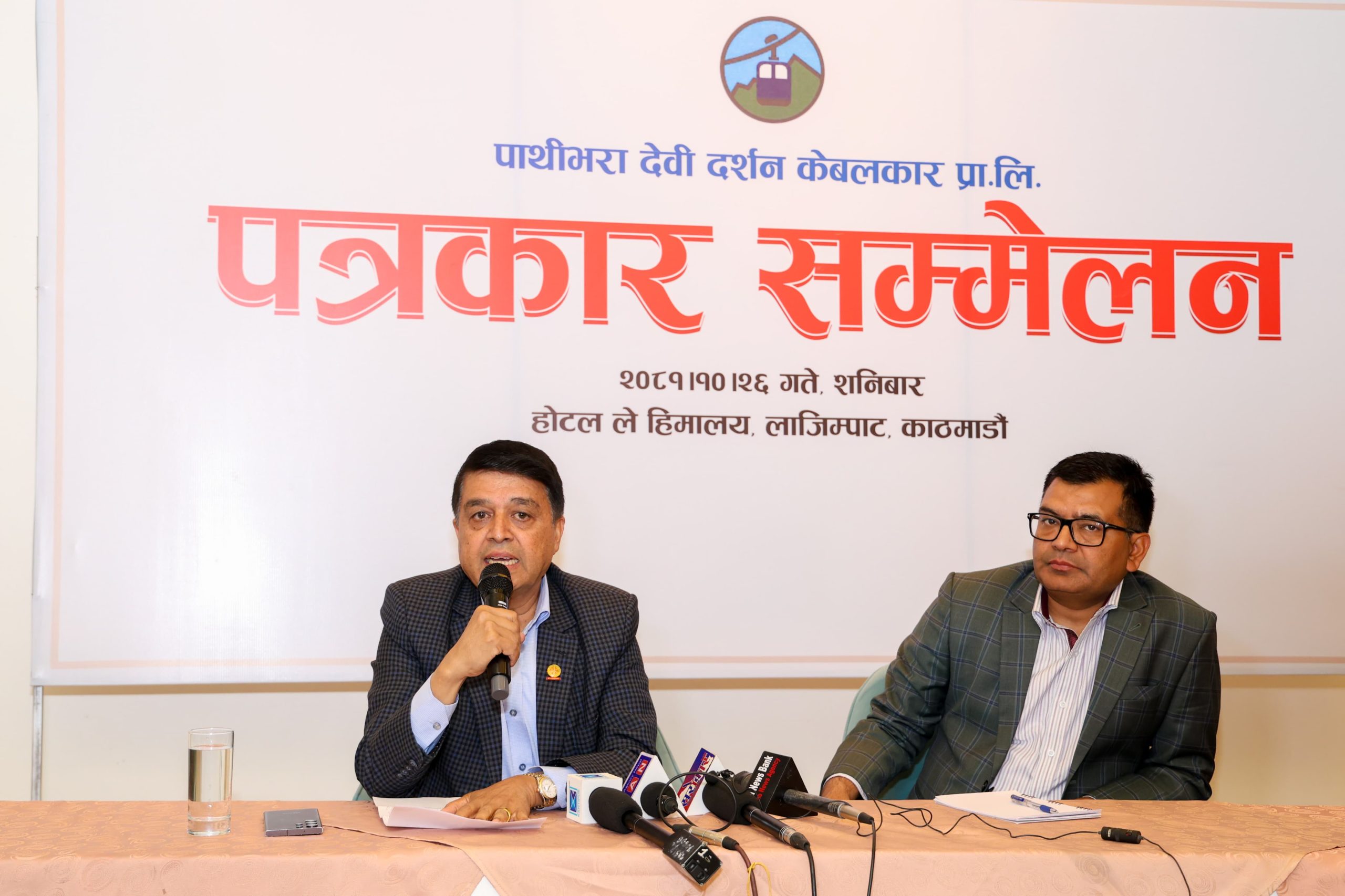
Chandra Prasad Dhakal
The Pathibhara Cable Car, currently under construction to reach the famous religious site Pathibhara Temple in the remote Himalayan district of Taplejung, has become a topic of discussion.
Despite concerns raised and protests on social media about losing the temple’s historical identity, the project has gained momentum after years of planning. The proposal for the cable car surfaced four decades ago, and the Pathibhara Devi Darshan Cable Car Pvt. Ltd. was established in 2072 B.S.
IME Group acquired a significant share in the Pathibhara Cable Car project in 2079 B.S. (2022 A.D.) with the goal of developing cable car-based tourist destinations across all seven provinces of Nepal. The required land acquisition for the cable car has been completed, along with providing substitute land to the Nepal government. The process of tree cutting along the cable car alignment and the approval of the Detailed Project Report (DPR) has also been finalized. The project was formally inaugurated, and physical construction work has commenced this month.
The project received approval from the Nepal government in 2075 B.S., with construction accelerating after IME Group joined the initiative two years ago.
Key features of the cable car:
- Length: 2.75 km, from Kaflepati in Fungling Municipality-11 to 700 meters west of Pathibhara Temple.
- Gondolas: 36 passenger gondolas and 2 for goods transportation.
- Travel Time: Cable car will cover the entire route in just 10 minutes and 31 seconds.
- Facilities: Basic infrastructure like drinking water, toilets, and oxygen will be available at the upper station, without disturbing the temple’s environment and cultural significance.
The cable car will provide easier access for elderly, physically challenged, and young children, making the pilgrimage safer and more convenient. Those who can afford it pay up to Rs. 200 per kilogram to have porters carry them to the temple. As a result, the cost for a single pilgrim can range from Rs. 10,000 to 15,000–20,000, which has been a common complaint among pilgrims. Similarly, for the wealthy, there is an option to charter a helicopter to reach the Pathibhara Temple.
It is expected to attract a significantly higher number of domestic and neighbouring country’s pilgrims, boosting local businesses such as hotels, restaurants, and transportation services. With an estimated cost of Rs 3 billion, the project will create around 300 direct jobs, with 80% reserved for locals.
Additionally, IME Group plans to offer local residents opportunities to invest in the project. The project has clarified that a portion of the profits generated from the cable car will be allocated to health, education, and local infrastructure through local authorities as part of its corporate social responsibility.
The cable car is an eco-friendly, electric transportation system that aligns with sustainable development principles. To minimize environmental impact, 25 trees will be planted for each tree cut during construction, with the new saplings cared for over five years before being handed over to the government.
Some individuals have attempted to disrupt the project, raising concerns on social media and spreading misinformation. Following the foundation stone laying of the Pathibhara Cable Car, some individuals have started creating obstacles in the construction process and discouraging private investment.
Furthermore, attempts have been made to tarnish the reputation of the private sector by making allegations that undermine their businesses, personal dignity, and honor. Targeting the entire private sector over the cable car project and disregarding their contribution to society, the economy, and the nation’s prosperity is highly unfortunate.
IME Group Chairman Chandra Prasad Dhakal expressed disappointment at the resistance, particularly from individuals outside the district. He emphasized that the project had followed all legal procedures and received approval from the concerned authorities.
This cable car will enhance pilgrimage experiences, create jobs, and support local economic development without compromising the area’s cultural and environmental integrity. We urge all stakeholders to avoid hindering the project and to recognize its potential to boost the region’s growth and prosperity. Such opposition could discourage future private investments in Nepal, sending a negative message to the global community. Let the people of Taplejung decide what is best for their future.
In conclusion, the cable car is merely a means of transportation that facilitates easier access for pilgrims visiting Pathibhara Devi. Since Pathibhara is a sacred symbol of faith for all Nepalis, the construction of the cable car will not affect any particular religion, ethnicity, tradition, or existing structures. Instead, it will help strengthen and preserve them.
[Chandra Dhakal, Chairman of IME Groups and President of Federation of Nepalese Chamber of Commerce and Industry, was addressing a press conference in Kathmandu regarding the obstruction of Pathibhara Cable Car construction on February 8, 2025.]





